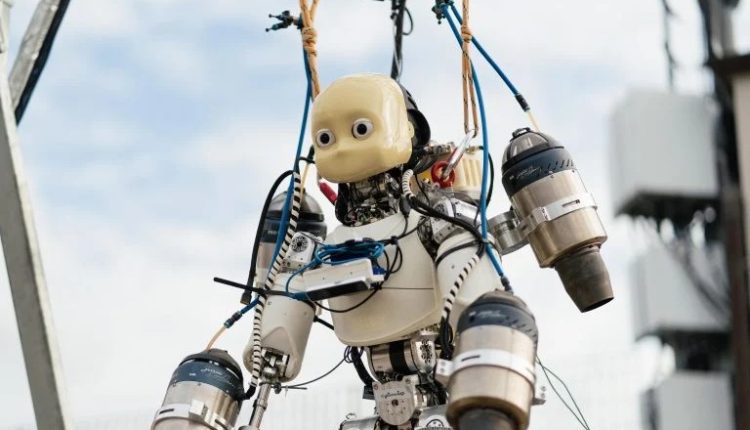Italy Unveils First Jet-Powered Flying Humanoid Robot As iRonCub3 Takes to the Skied
In a major milestone for robotics, researchers at the Italian Institute of Technology (IIT) have completed the first successful flight of a jet-powered humanoid robot named iRonCub3.
The machine, developed over a two-year period, represents a leap in integrating flight capabilities into human-like robots for real-world applications.
The flight, which saw the robot hover approximately 50 centimeters above the ground, was the result of complex engineering efforts involving thermodynamics, aerodynamics, AI, and robotics.
The achievement was recently published in Nature Communications Engineering and showcases the convergence of multiple disciplines to solve a new frontier in humanoid robotics.
Built on the iCub3 platform, a teleoperated humanoid designed by IIT, iRonCub3 is equipped with four jet engines two mounted on the arms and two on a back-mounted jetpack.
Its design required major structural adaptations, including a reinforced titanium spine and protective heat-resistant coverings to withstand temperatures of up to 800°C generated by the turbines.
According to lead researcher Daniele Pucci, who heads the Artificial and Mechanical Intelligence (AMI) Lab at IIT, the effort required a departure from traditional humanoid design principles.
“This research is radically different from traditional humanoid robotics. Thermodynamics plays a pivotal role, the emission gases from the turbines reach 700°C and flow at nearly the speed of sound.
“Aerodynamics must be evaluated in real-time, while control systems must handle both slow joint actuators and fast jet turbines,” said Pucci.
The humanoid’s asymmetric structure and moving limbs posed significant challenges to stability and control, unlike the fixed forms of conventional drones.
Researchers developed advanced multibody dynamic models and integrated AI algorithms to allow the robot to adapt mid-flight to airflow changes and structural shifts caused by limb motion.
To refine the aerodynamic behavior of the robot, the project partnered with specialists from the Polytechnic of Milan for wind tunnel testing and with Stanford University, where deep learning models were developed to help the robot interpret airflow data in real time.
“Our models include neural networks trained on simulated and experimental data and are integrated into the robot’s control architecture to guarantee stable flight,” said Antonello Paolino, the paper’s first author and a PhD student in a joint program between IIT and Naples University.
The development of iRonCub3 involved a co-design strategy, meaning both hardware and software were optimized together to accommodate the extreme conditions of jet-powered flight.
Special focus was placed on thrust control, heat dissipation, and coordinated takeoff and landing maneuvers, ensuring the robot’s structural integrity and flight reliability.
The robot now weighs about 70 kg, with its jet engines capable of producing over 1000 newtons of thrust sufficient for hovering and precise aerial maneuvers even in turbulent conditions.
Beyond the successful lift-off, researchers at IIT have their eyes set on broader applications.
With assistance from Genoa Airport, a new, dedicated flight-testing space is being developed to facilitate expanded trials under controlled conditions.
The broader vision for iRonCub3 and its successors includes deployment in disaster zones, hazardous environment inspections, and missions requiring both locomotion and aerial access.
These scenarios demand robots that can walk, manipulate objects, and take flight capabilities that iRonCub3 is being engineered to master.
As humanoid robots continue to evolve, the flight of iRonCub3 signals a future where machines shaped like us may also move like us through the air and across the ground with intelligence and precision.

